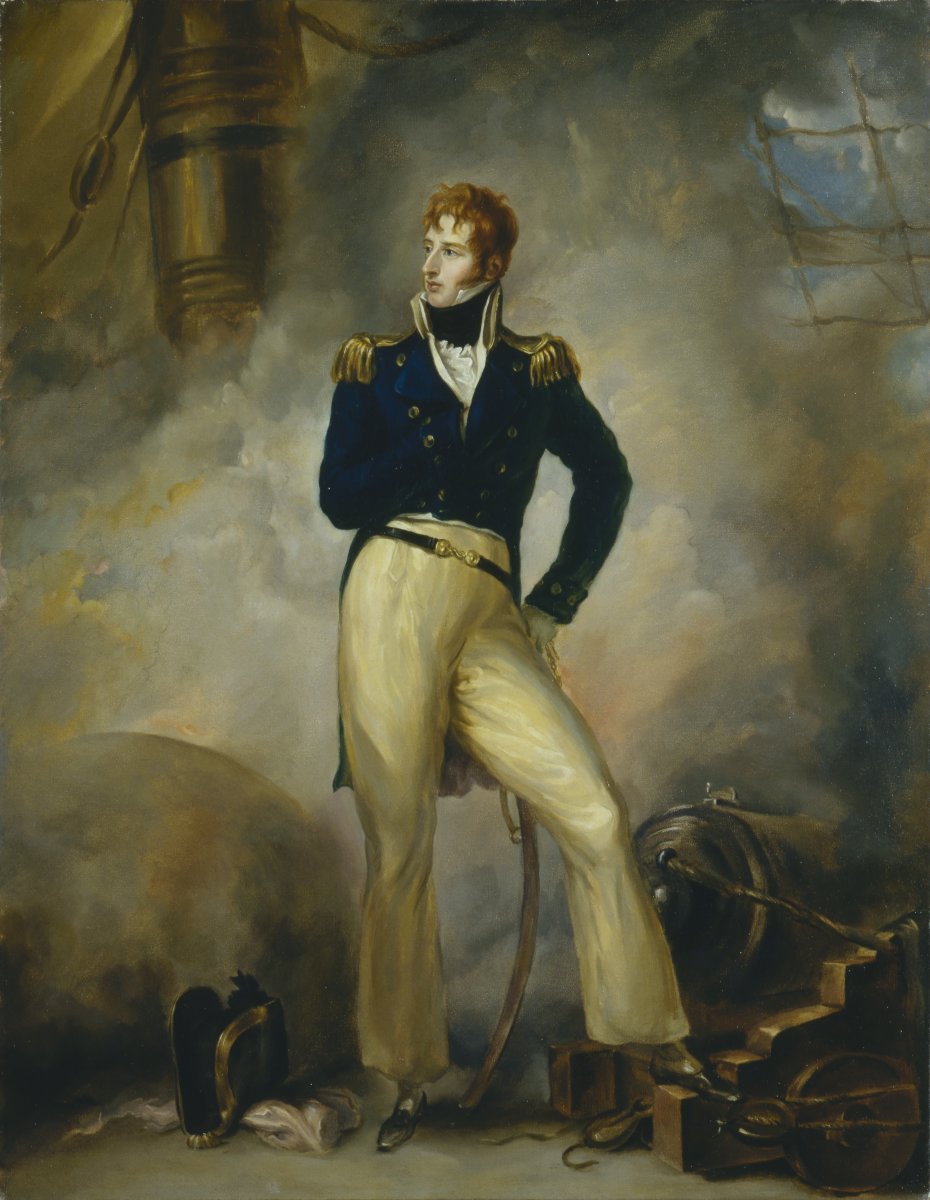Thomas Cochrane, 10th Earl of Dundonald (1775-1860) Admiral
Peter Eduard (after) Stroehling (1768 - 1826)
Archibald Eliot Haswell-Miller (1887 - 1979)
Oil on canvas
1951
-
About the work
- Location
-
Country: Brazil
City: Brasilia
Place: British Embassy
Thomas Cochrane, tenth Earl of Dundonald, was a Scottish naval officer known for his mercenary activity in Latin America and Greece and the role he played in the British navy and Parliament. He was born in Hamilton and entered the Royal Navy in 1793, aged seventeen, later being appointed lieutenant in 1796. He was promoted to captain after he took fifty enemy vessels while in command of the Speedy from 1800 to 1801. During the short-lived peace which followed he spent a period of time studying in Edinburgh, but returned to the navy in 1803 on the renewal of hostilities. Following his complaints over the poor condition of his ship he was posted to the Orkneys, but in 1804 he was appointed to the Pallas and achieved successes in action against the French and Spanish.
Elected MP for Honiton in 1806, he went on to stand for Westminster the following year and made a name for himself as a critic of abuses in naval administration. In late 1807 he returned to naval action and was posted to the Aix Roads in 1809, where he attacked the French fleet and was rewarded with a knighthood. His success was tempered by the refusal of Lord Gambier, his admiral, to offer sufficient aid, and Cochrane’s protests against the offer of a parliamentary vote of thanks for Gambier did little to endear him to the authorities. In 1814 he was implicated in a case of fraud and, stripped of his knighthood, was expelled from the navy and the House of Commons. Later returned by his constituents, he continued to oppose the government.
Given his position in the British political and naval arena, it is unsurprising that Cochrane accepted the offer of the Chilean government in 1817 to command the country’s navy in its war of independence against Spain. His success here was followed by an expedition to aid Peru in its struggle for liberation. By this time his name was sought after. He was made admiral by Pedro I of Brazil in 1823 and contributed to the establishment of Brazilian independence from Portugal. On his return to Europe, he turned his mercenary activities towards the Greek struggle for independence from Turkey.
British politics had sufficiently changed by the late 1820s to enable Cochrane to return to the British navy and be appointed rear-admiral. In 1831 he succeeded his father as the tenth Earl of Dundonald and his interests subsequently turned to the development of steam and other technologies. His knighthood was restored in 1847 and the following year he was made commander-in-chief of the West Indies. Appointed admiral in the British navy in 1851, he came to occupy a place in the nation’s admiration that had only recently been vacated by the Duke of Wellington, as well as bearing an international reputation based on his mercenary activities and his identity as the romantic naval hero.
Stroehling’s portrait of Cochrane was exhibited at the Royal Academy in 1807. This copy was commissioned by the Ministry of Works for the British Embassy in Buenos Aires in 1951.
-
About the artist
Peter Eduard Stroehling was born in 1768 in Düsseldorf. Following a period of working in Paris and Germany, he studied in Italy in the early 1790s. He visited Vienna in 1796 and then spent the next five years in St Petersburg. Stroehling arrived in England around 1804 and established his name as a successful painter of portraits and miniatures, exhibiting at the Royal Academy, British Institution and the Society of British Artists. From 1810 to 1820 he was Historical Painter to the Prince of Wales.
-
Explore
- Places
- Subjects
- Materials & Techniques
-
Details
- Title
- Thomas Cochrane, 10th Earl of Dundonald (1775-1860) Admiral
- Date
- 1951
- Medium
- Oil on canvas
- Dimensions
- height: 91.00 cm, width: 71.00 cm
- Acquisition
- Commissioned 1951
- Provenance
- Copy commisioned from Haswell-Miller in 1951.
- GAC number
- 1260